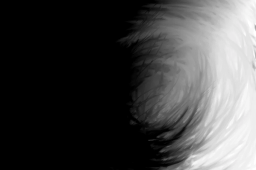Sunday Best
- June 26, 2017
- by
- Ivan Moore
For some of us, church isn’t church without freshly pressed slacks, a necktie tied pinned with a gold chain, and shoes pristinely shined. For others, church is more like church as they feel a cool breeze through the knee hole in their jeans with their flip flops smacking and pattering announcing their entry. The term “Sunday Best” has a wide range of connotations across the tapestry of the body of Christ. As I reflect on my time touring the civil rights monuments of the American south, this term took on a whole new meaning. This new definition comes from a set of two pictures.
“And as long as I’ve got my suit and tie…all pressed up in black and white.” Justin Timberlake may have been trying to make the club a little classier with his 2013 hit “Suit & Tie” but long before one of Memphis’s favorite sons tried to bring it back, Dr. Martin Luther King Jr. sure was making it look good. It’s difficult to find a statue or picture of Dr. King in front of a crowd without his suit and tie. It was his suit of armor, a uniform of his vocation as a pastor, proof that whether he was behind the pulpit or in front a march, it was an act of worship.
The fashion of the movement also became intertwined in the fabric of its protests. Downtown shopping districts in cities denying blacks their human rights relied on the profits of selling the freshest Sunday looks. In an act of protest, citizens of these cities would refrain from buying new church clothes to send a powerful blow to an economy that was supporting systems of oppression across the south. Church clothes became a way of communicating power. They, also, became a way of communicating that the cause of civil rights was a worthy one. Which leads us to the first picture.
Sprawled across the steps of the Sixth Avenue Baptist Church in Montgomery, AL, dozens of civil rights leaders the likes of Dr. King, Rosa Parks, and many more stood tall adorned in crisp suits and dresses. Looking at the picture you might assume the group was about to turn around and enter the sanctuary for a vibrant holiday church service. In reality, this crowd was prepared for a date with a prison cell. They were turning themselves in to the police, a situation many of them were familiar with throughout the marches and protests that helped define the movement. They gladly went to jail for their rights and the rights of their sisters and brothers. This was an occasion that called for their Sunday best. It is a picture filled with dignity, honor, and hope. The second picture is a different story.
“Daddy let me watch from his shoulders,” is etched across the sculpture of a fancy hat in a style you might see in an episode of Mad Men. The others in the collection feature similar sentiments. One hat boasts about being excused from school. Another describes packing a picnic. To the right of the hats are a series of screen printed ties. Printed on each one is a group of people decked out in their Sunday best. Hats, ties, smiling children on shoulders, and a fresh picnic packed with all the summer favorites, this is the second picture. As the art exhibit seen at the Rosa Parks Museum explains, this was a common scene at a lynching.
Letters on the wall explain that the time between the decades prior to the turn of the 19th century and on through the late 60’s saw thousands of known lynchings. Black people were hung from trees, burned, beaten to death, etc. for charges such as talking to the wrong person, eating at the wrong restaurant, or trying to register to vote. As informal mobs brutalized human beings, thousands would gather to watch with smiles and laughter all while wearing their Sunday best. Isn’t it interesting that these spectators were covered by layers of fine clothing, but they stand in that crowd exposed for future generations to see? No amount of expensive material can hide evil from God’s sight.
Throughout church history, high priests and pastors often wore elaborate outfits for everything from holidays to your average Sunday. Some were prescribed by scripture like that of Old Testament temple priests. When it came time for Jesus to enter the scene, though, he saw that these ceremonial clothes had become a way of trying to hide the sins of the religious elites like the Pharisees. Looking at Matthew 23, “Woe to you, teachers of the law and Pharisees, you hypocrites! You are like whitewashed tombs, which look beautiful on the outside but on the inside are full of the bones of the dead and everything unclean. In the same way, on the outside you appear to people as righteous but on the inside you are full of hypocrisy and wickedness.” Not long after, Jesus was beaten, stripped naked, and hung upon what scripture often calls a tree. He became clothed in all of our darkness, guilt, and shame and died for our sins. Then he rose, conquering death and assuring that we would have access to eternal robes of righteousness.
As I look at both of these pictures, I need to cling to the robes Jesus has wrapped me in. It was humans that stood in those lynching crowds with smiles on their faces. It was humans that hit children with high powered fire hoses and vicious dogs. It was humans that sent a pastor and a seamstress to prison for trying to live with dignity. Humans are capable of unspeakable evil even while wearing the nicest threads. I am human and the painful past of America is terrifying to me because it reminds me that I am capable of evil.
Fortunately, Jesus redefined our Sunday best and established his own high fashion. He sees our broken heart behind anything we try to cover it with and offers us his love anyway. He not only covers us with his Sunday best but gives us the ability to clothe others in his love. Jesus saves me from evil and inspires me towards good. In stripping down their victims, the people in those horrific lynch mobs exposed their own sinful hearts that will define their history. Jesus’s robes of righteousness defined Dr. King’s legacy and I pray they’ll also define mine.






